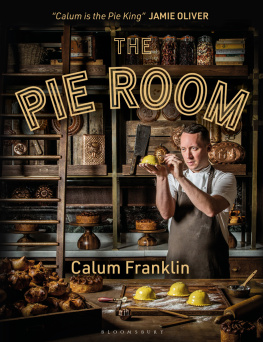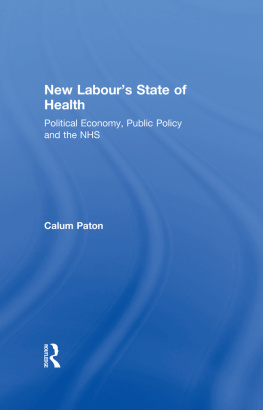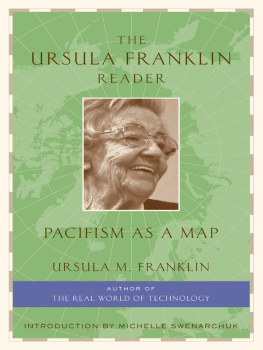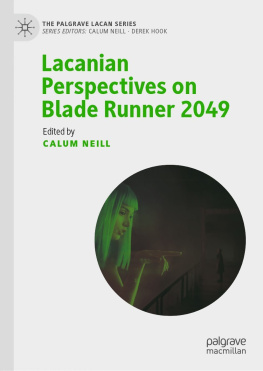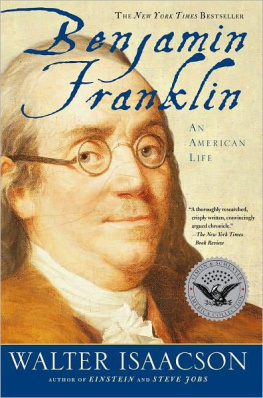Calum Franklin - The Pie Room
Here you can read online Calum Franklin - The Pie Room full text of the book (entire story) in english for free. Download pdf and epub, get meaning, cover and reviews about this ebook. year: 2020, publisher: Bloomsbury Publishing, genre: Home and family. Description of the work, (preface) as well as reviews are available. Best literature library LitArk.com created for fans of good reading and offers a wide selection of genres:
Romance novel
Science fiction
Adventure
Detective
Science
History
Home and family
Prose
Art
Politics
Computer
Non-fiction
Religion
Business
Children
Humor
Choose a favorite category and find really read worthwhile books. Enjoy immersion in the world of imagination, feel the emotions of the characters or learn something new for yourself, make an fascinating discovery.
- Book:The Pie Room
- Author:
- Publisher:Bloomsbury Publishing
- Genre:
- Year:2020
- Rating:3 / 5
- Favourites:Add to favourites
- Your mark:
- 60
- 1
- 2
- 3
- 4
- 5
The Pie Room: summary, description and annotation
We offer to read an annotation, description, summary or preface (depends on what the author of the book "The Pie Room" wrote himself). If you haven't found the necessary information about the book — write in the comments, we will try to find it.
The Pie Room — read online for free the complete book (whole text) full work
Below is the text of the book, divided by pages. System saving the place of the last page read, allows you to conveniently read the book "The Pie Room" online for free, without having to search again every time where you left off. Put a bookmark, and you can go to the page where you finished reading at any time.
Font size:
Interval:
Bookmark:


For my wonderful wife Shenali and my family:
I think Dad would have liked this.




Introduction
There is a copper-coloured light that spills onto the street in the darkness of night on High Holborn. It falls from The Pie Room, a Victorian kitchen that nestles, like the smallest part in the heart of a Russian doll, into Holborn Dining Room, a grand British brasserie and the main restaurant of one of Londons most majestic examples of Edwardian Baroque architecture, the Rosewood London.
It is a room made of marble, brass and copper, which houses chefs hand-crafting hundreds of pieces of savoury pastry a day with jazz and soul music playing gently in the background. It is a room dominated by detail and artistry, that reflects the work happening within. It is a celebration of a constant in British food culture stretching back 600 years and it is where we try to make the most beautiful pies in the land.
To explain how The Pie Room came about, we need to go back a little bit. I was raised in a bakery, child to two of Europes greatest bakers, often perched on a vast bag of flour while watching them work, scribbling notes from the age of two, studying the mastery, learning the way of the dough.
None of that is true. The reality is that I was raised in South East London by two lovely parents (not bakers) with my two brothers, and my food experience as a child was similar to most British kids in the 80s and 90s; I wasnt foraging for herbs, more foraging for chicken nuggets. But then as I was finishing school I was still unsure of what I wanted to do with my life, and I took a job as a dishwasher at a local restaurant and found my future home immediately in the kitchen. I knew it was an environment where my fidgety energy, not really suitable for desk work, could be channelled to make something of myself.

I worked my way through kitchens, mostly focused on modern European fine dining, learning how to cook properly and to stand up straight. Yes, there were lots of dots of multi-coloured purees and sometimes overly fancy presentations in that style, but the basis of it was really quite old-fashioned, classical cookery braises, confits, fine pastry work, stocks and sauces. I still use those techniques every day now, but as I got older, I leaned towards a more simple style of cookery, and as indigenous ingredients improved in the country and became more prevalent, I wanted to work more with those and to embrace the roots and history of British cooking. Embracing your own food culture after years and years of cooking others is liberating, and knowing you can play a little part in improving its reputation is exciting. When Holborn Dining Room arrived, I knew I had a chance to do exactly that.
We opened Holborn Dining Room in early 2014 with a goal to serve the best British produce available, cooked simply in elegant surroundings with service to match. It was a considerable restaurant, seating 180 inside and 50 outside, open all day from early in the morning and with a huge gin selection at the bar. The building it lies within dates back to 1912 and in the deepest basement is a vast equipment store that I was once rummaging through and stumbled upon an antique tin. At first inspection I had no idea what it was for, let alone what era it was from. It turned out to be a complex pie tin with interlocking parts and keys and it intrigued me. I took it up to the main kitchen and asked my chefs if they had ever used one before and quickly realised that I had identified a gap in our knowledge.
With little to reference against we practised using the tin methodically, noting down steps that worked, cooking times and temperatures until finally we thought we had produced something of a high enough standard to make the menu; it took us almost a year of trials to get it right.
That first pie was the beginning of something here, a fascination with lost skills, a revival of handcraft and technique left behind. It reminded me of how much I enjoyed any fine pastry work when I was training; cooking that sometimes felt like small projects because of the skills and discipline needed to get the perfect results.
In the restaurant I started to add more savoury pastry dishes, beef wellingtons, pies and tarts to the menu; they were always well received by our guests and the demand kept building. I wanted a whole pie menu, a celebration of classic British pies and some of our own creations, and our guests wanted it too, but to achieve that and maintain the standard that I look for, we needed to build a special kitchen and the seed was sown for The Pie Room.


I wanted the room to be a window into the elegant, detailed pastry work that was happening in the restaurant. Its location on the side of the dining room allowed a glass front to the street into which we incorporated hatches through which more homely, rustic pies could be passed at lunchtime when the dining room was full. The Pie Room became a catalyst for change within the restaurant, consolidating its London heritage alongside the Gin Bar and giving Holborn Dining Room a sense of place.
The room took a full year to build because I had drawn the designs by hand. I had a clear vision of how it would be composed, one that was a little tricky, and I was overly stubborn, refusing to compromise on any details but it was worth the wait and Im forever grateful (and sorry!) to all who played a part in its construction; I hope they all look at it now with the same pride that I do.
Ive always been a bit weird; I doodle obsessively and always have, usually patterns over and over like Roy and his sculptures in Close Encounters of the Third Kind, so design has always been important to me and Ive always appreciated the opportunity to create. This room gave me and the team a chance to carve out our little corner in British food history.
The mix of styles of pastry work in the room, from the simple to the extravagant, led to this book. I wanted to share recipes that could be recreated at home by anyone, not just chefs with specialist equipment. I wanted to bring British savoury pastry to a wider audience. The recipes in this book range from dishes that can be made in an evening such as the venison, bone marrow and suet pie, to larger, more celebratory and showstopping work such as the coronation chicken pie. Ive also included details on the techniques and skills needed to make your pies as elaborate and beautiful as you wish, and that is exactly where I would start: take your time to work through the information as there are the tools within to make the pastry work achievable at home.
Font size:
Interval:
Bookmark:
Similar books «The Pie Room»
Look at similar books to The Pie Room. We have selected literature similar in name and meaning in the hope of providing readers with more options to find new, interesting, not yet read works.
Discussion, reviews of the book The Pie Room and just readers' own opinions. Leave your comments, write what you think about the work, its meaning or the main characters. Specify what exactly you liked and what you didn't like, and why you think so.

